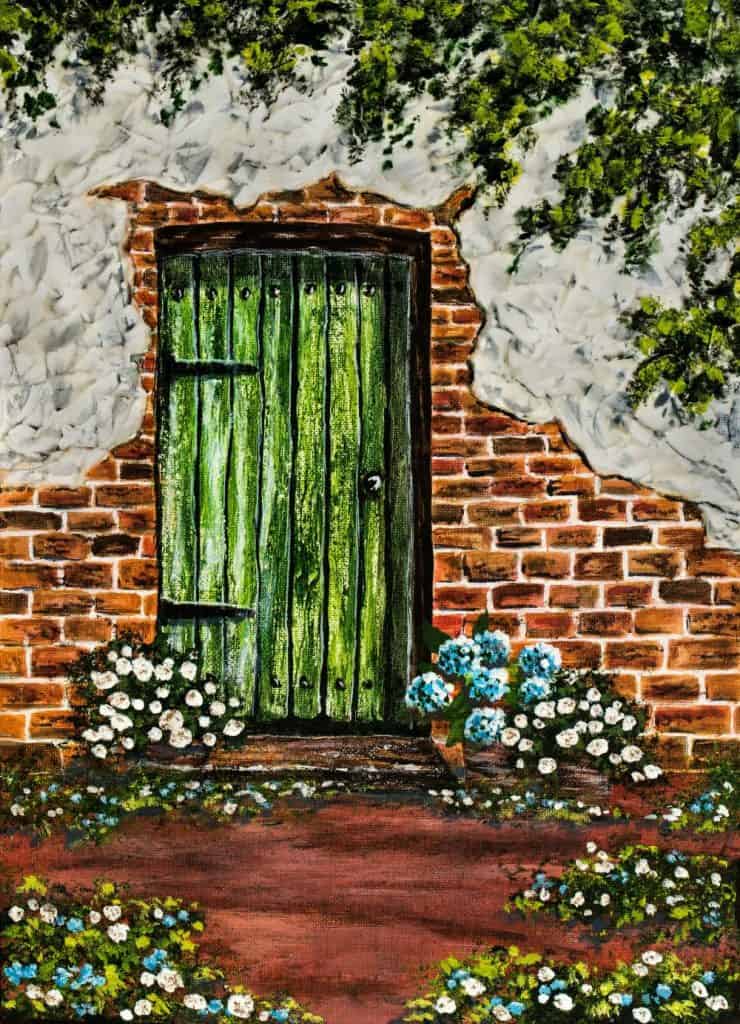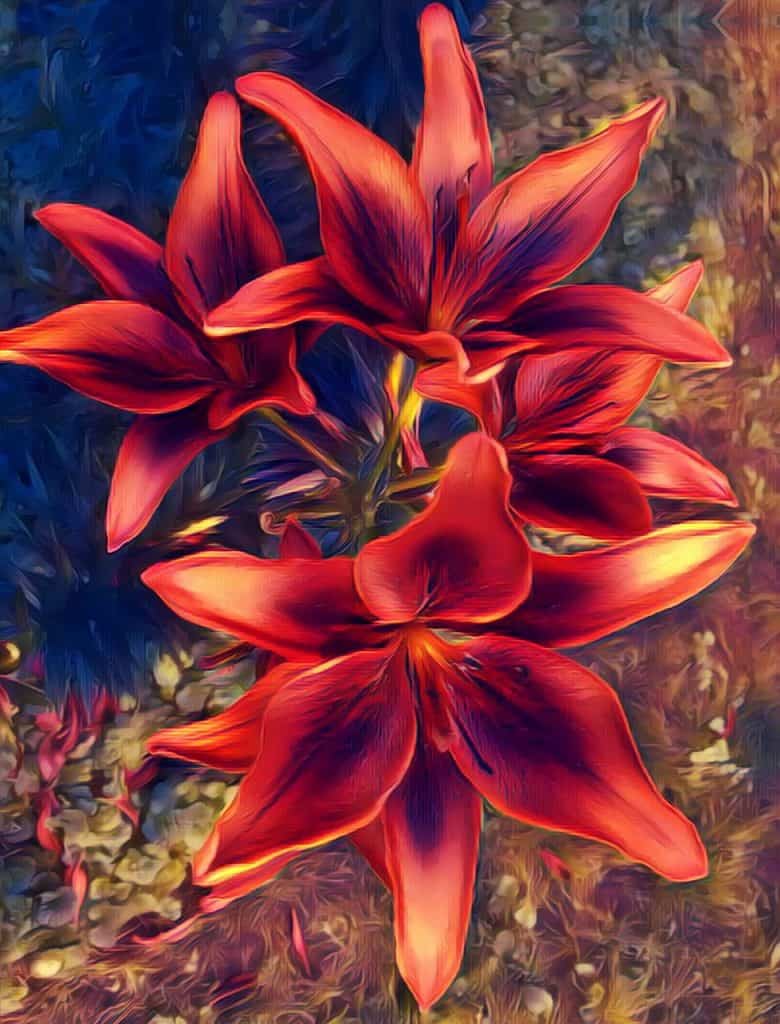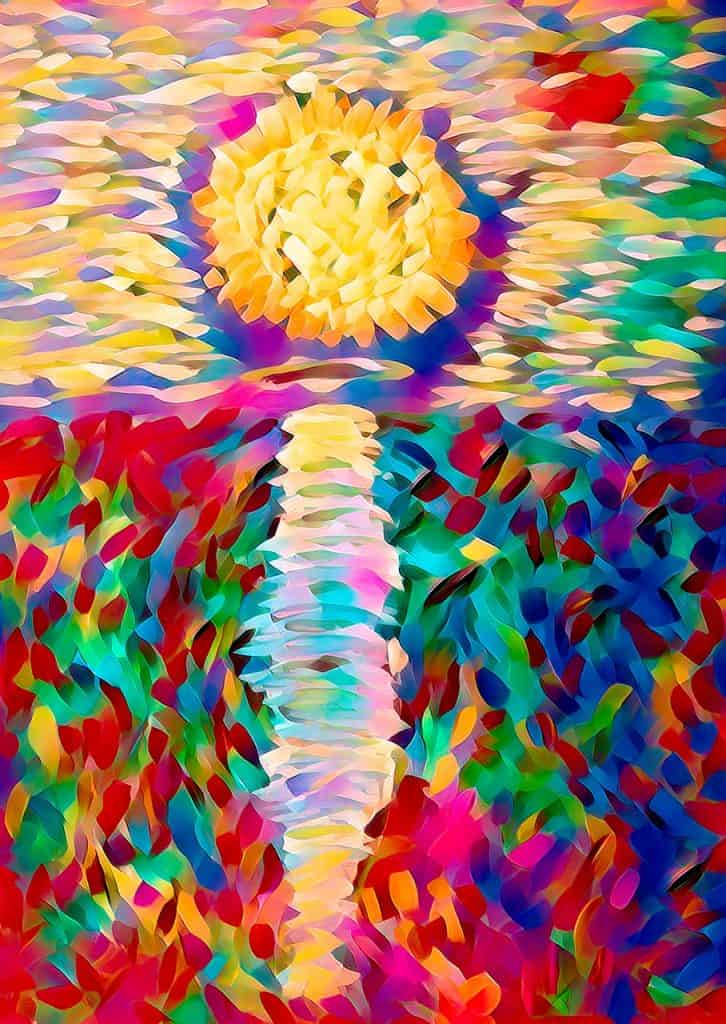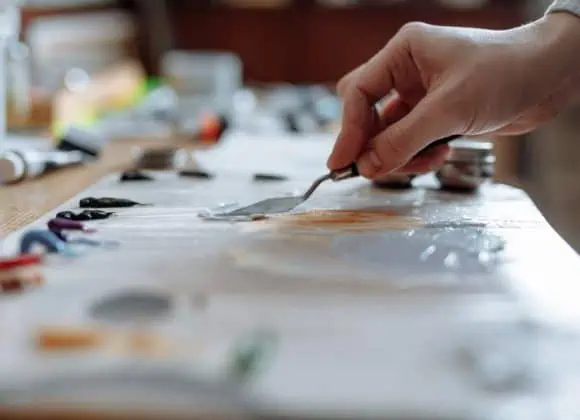Yes you can add water to any acrylic paint. Acrylic paint is water based so the water simply works as a thinner. If you want to create a translucent wash with acrylics this is the way to do it.
Table of Contents
Should You Water Down Acrylic Paint?
Generally I would say don’t water down acrylic paint unless you are looking to create a translucent wash. If you use the paint just as it comes out of the tube or tub it will show your brushstrokes and the final painting can look much better.
Using the paint straight from the tube you can use the brushstrokes to add extra finesse to the painting. You can also use the brushstrokes to create shape and texture in your paintings.
Watering the paint down can help with certain things. If you want a translucent wash then this will help. Make sure if you are painting on paper that the paper is stretched well first. If you don’t stretch the paper properly when you apply watered down paint the paper can buckle and warp.
It can also be a way to create fine detail more easily. If you paint the rough image first you can add highlights and shadow with a thin wash of dark or light. If I am painting a meadow then one of my favourite tricks is to roughly paint the background color with thick paint and then use a fan brush to flick in small details with the watered down paint in various similar shades to give highlights and shadows.

How Much Water Can You Add To Acrylic Paint?
You can add any amount of water to acrylic paint. Add a little water and you will get a flatter paint that doesn’t show the brush strokes so much but is still fairly opaque. If you add more water then you are reducing the percentage of pigment in the paint so it will appear more translucent and show the color beneath through more.
Some acrylic paints are naturally thicker than other brands too. The thicker the paint is to begin with the more water you can add. The likelihood is that some acrylic paint is aimed more at the professional painters and this will likely be thicker.
What Is The Best Thinner For Acrylic Paint?
Water is the only thinner that you will ever need for acrylic paints. If you really need to you can use an acrylic medium but in most circumstances it isn’t really necessary. If you paint with acrylic paint thinned with water directly onto unprimed paper, it will soak into the paper more and give a more matt finish similar to watercolors. However this can easily be changed by priming the paper before you start painting.
This is part of what makes acrylic paints so flexible. You can use them in so many different ways. If you use the water thinned paint on a surface that has previously been primed with acrylic, they will dry on the surface with a semi gloss sheen just as they do when they aren’t thinned.

Final Thoughts
Try experimenting to see the different effects you can get. Painting thinned paint onto an un-dried base layer you will be able to blend the colors together where as painting them onto a dry base layer will give you sharper, more defined lines.
Be careful not to overwork your paintings. Concentrate on getting all the colors on as quickly as you can. W from dark to light, cleaning your brushes thoroughly each time. When all the colors are roughly applied, take a clean dry brush and lightly work the edges together to create the gradients of color and tone you want. Wipe your brushes regularly to make sure everything doesn’t just end up amuddy brown color.






